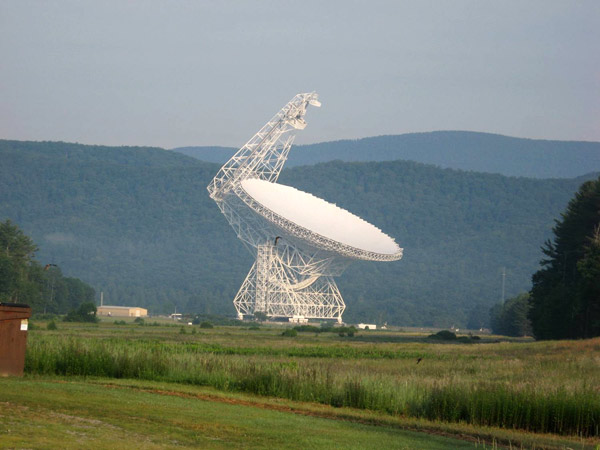Astrochemistry
Overview
In order to place our solar system into context, we need to understand the chemistry and isotopic makeup of the Milky Way Galaxy.
We do this in part by measuring the isotopic compositions of young stellar objects and molecular clouds (the cradles for star formation) across the Galaxy. For this purpose we use some of the world's largest telescopes. This includes the W. M. Keck Observatory atop Mauna Kea (one of the domes is shown below, image taken by EDY):

We also make use of the Green Bank Observatory that features the world's largest steerable radio dish (image below):

What we learn
Galactic chemical evolution refers to the growth of the concentrations of elements and their isotopes with time in the Galaxy. It results from nucleosynthesis in stars. We can use various ratios of elements and isotopes to learn about Galactic chemical Evolution. Most recently, we have shown that there is a surprising lack of variation of the isotope ratios of silicon across the Galaxy (Monson et al. 2017, see figure below):
This figure above shows the 29Si/28Si isotope ratio plotted against the 30Si/28Si ratio for various star-forming regions across the Galaxy (error ellipses) compared with pre-solar grains found in meteorites (dots) and the solar value (circle dot). The tight clustering of the interstellar data contrasts with the 1000 per mil (units used on axes) expected on the basis of trends in other isotope systems.


